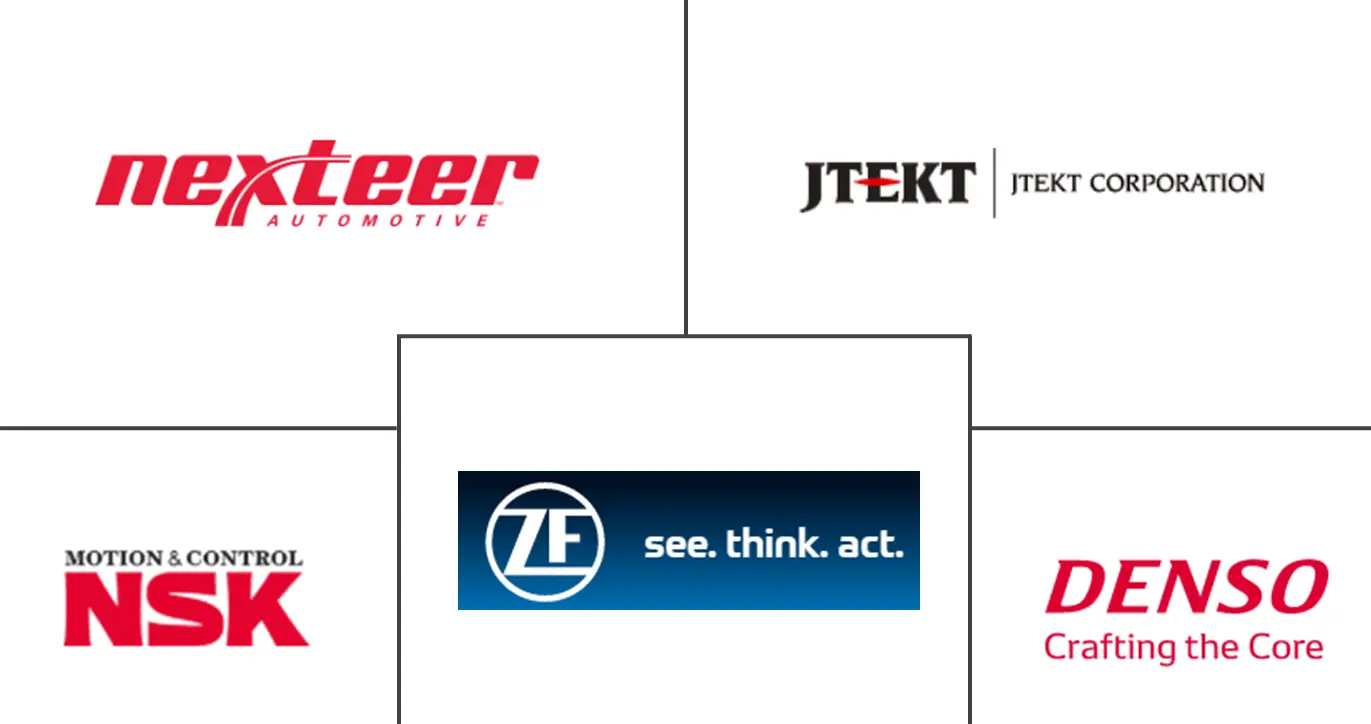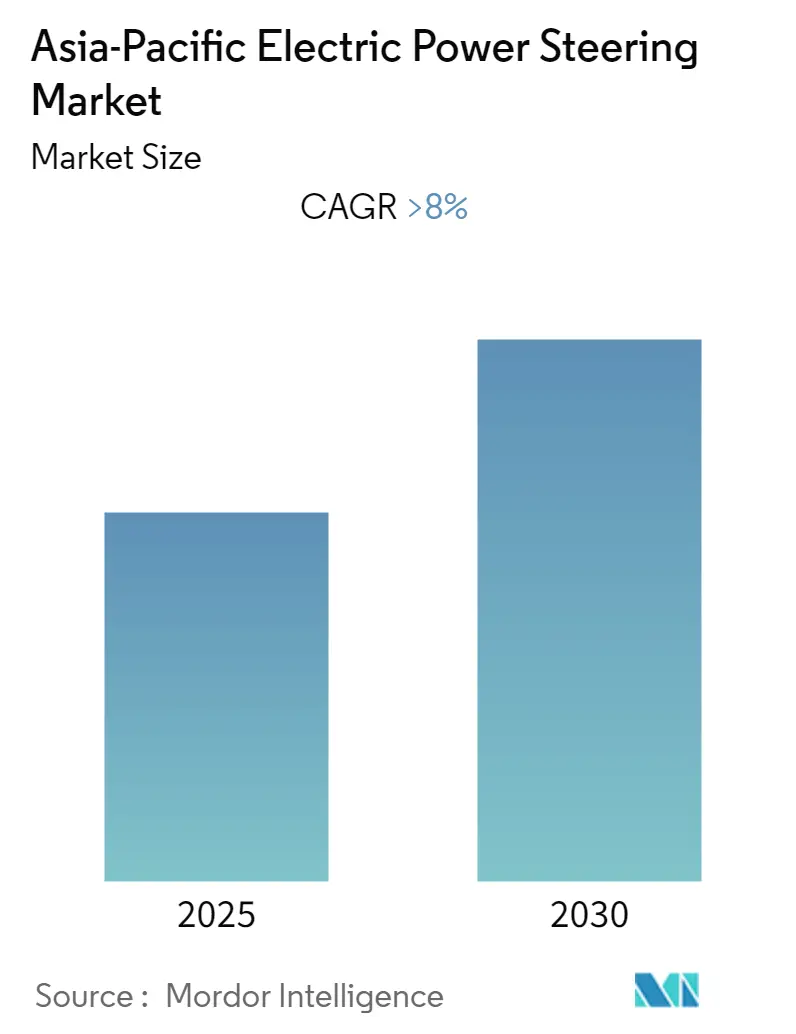
Asia-Pacific Electric Power Steering Market Analysis by Mordor Intelligence
The Asia-Pacific Electric Power Steering Market is expected to register a CAGR of greater than 8% during the forecast period.
- The Asia-Pacific EPS market is gaining traction mainly due to the factors such as the presence of many emerging economies like India, China, and Japan in this region, and income of middle-class customers are growing rapidly, which is attributing the demand for vehicles.
- The market is anticipated to be driven by the increasing demand in budget and sport segment vehicles. However, OEMs have started focusing on implementing cost-effective EPS systems. Thus, there has been widespread utilization of these technologies in passenger and light commercial vehicles.
- However, the sales and production of the cars have been decreased gradually mainly due to the economy lockdown. This declining trend has further continued during the first quarter of 2020 due to the outbreak of Corona Virus across the Asia-Pacific region. The government in this region had announced country lockdown, due to which both production facilities and dealerships were shutdown.
- The new vehicle sales are expected to revive post the end of Corona Virus across the region. Countries such as China, Japan, and India have started selling cars both through offline and online channels by the end of May 2020.
Asia-Pacific Electric Power Steering Market Trends and Insights
Sensors Segment is Expected to have a Significant Growth
Currently, the sensors are experiencing more growth compared to other components, and it is expected to continue its dominance during the forecast period. The increasing demand for this segment is attributed to provide comfort to the passengers. The sensors are located in the steering column which measures two primary driver inputs - torque (steering effort), and steering wheel speed and position.
Thus, there are three types of sensors used in such systems - torque sensor, steering wheel speed sensor, and position sensor. Torque sensors are generally non-contact sensors. These sensors measure the steering force applied by the driver, and thus, enables sensitive control of the electric steering support.
- It works based on a non-contact magnetic measuring principle. It contains a magnet unit, a flux-tube unit, and a sensor unit. The torque sensor itself has two independent coils of wire. One of the coils determines if a right-hand turn is being made, while the other determines if a left-hand turn is being made. The signal is then sent from the EPS module to the appropriate coil, which then assists the vehicle in steering.
With the growing advancement in technology, sensor products have also been consistently upgrading. For instance,
- In June 2019, Continental AG had unveiled a new short-range radar sensor which allows for more precise detection of vehicle surroundings. In place of the 24 GHz technology used up to now, the new radar generation operates using 77 GHz technology.
- In June 2018, Infineon technologies AG developed a new magnetic angle sensor TLE5014. The new product can be easily integrated into a safety critical EPS system. The TLE5014 sensors meet ISO26262 ASIL C for the single die and ISO26262 ASIL D for the dual die versions.
Additionally, the automobile industry in Asia-Pacific countries have significant growth potential, owing to low automobile production costs, easy availability of economical labor, lenient emission, and safety norms, and government initiatives to support foreign direct investments (FDIs).
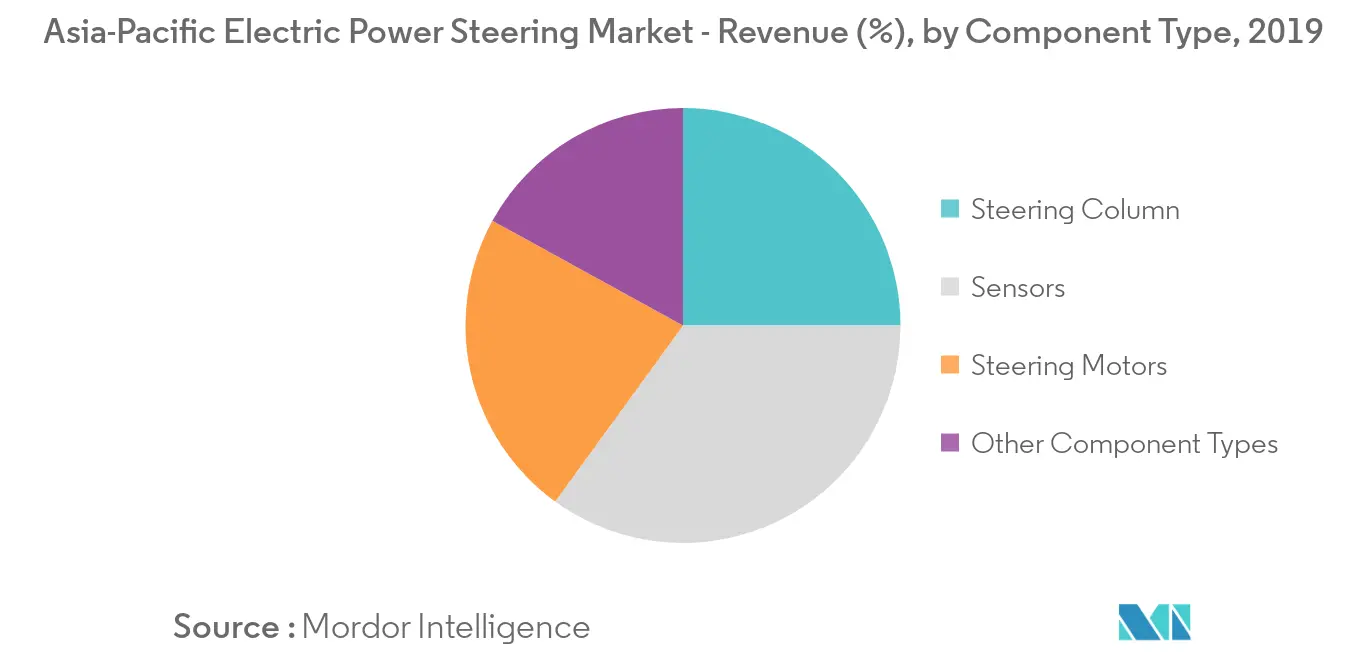
India to Experience Fastest Growth
The Indian economy is growing and is anticipated to experience the fastest growth in the market. The increase in growth can be attributed to the government initiatives, increasing sales in passenger cars, and vehicle production has gone up drastically. Due to the hike in vehicle production, the electric power steering component market is also gaining momentum. Additionally, the Indian government has modified the tax slabs on gasoline, diesel, and hybrid cars, in its 2018 budget to promote vehicle sales.
Currently, more than 30% of the passenger cars are running with EPS technology in India, and the technology is likely to be implemented in the majority of the budget passenger cars as well, during the forecast period. Some of the major automakers, who have launched the EPS system in their models in India, in 2018, include Tata Motors, Datsun and Ford. For instance,
- In April 2018, Tata Motors announced that it will expand its Nexon range powered by automatic manual transmission (AMT) technology, by launching the Nexon HyprDrive Shelf-Shift Gears model. The model comes with the feature of lowest turning circle radius of 1.5 m with the electric power-assisted steering (EPAS).
- In March 2018, Datsun India launched a remix edition of Datsun GO and GO+ models. Both the models featured speed-sensitive electric power steering.
- In January 2018, Ford introduced compact utility vehicle (CUV) the all-new Ford Freestyle in India and the vehicle was made available for sale in the second quarter 2018. The Freestyle offers a uniquely tuned EPAS.
Thus, India is experiencing a good potential for automotive EPS business, as automakers in India have gradually started adopting the EPS system in their advanced vehicle models and anticipated to continue to adopt in their upcoming models in the future.
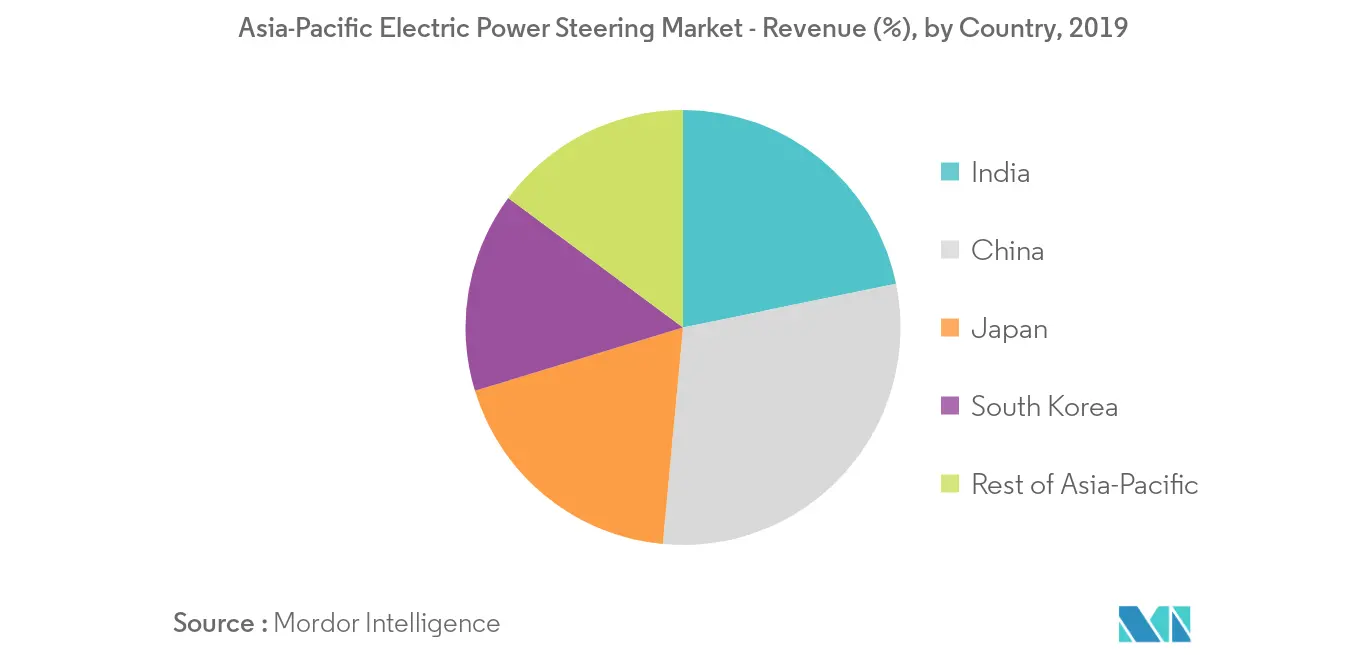
Competitive Landscape
The Asia-Pacific Electric Power Steering market is dominated by few players such as Denso Corporation, Nexteer Automotive, NSK Ltd., JTEKT Corporation, and ZF Friedrichshafen AG. These companies have plans to continue to expand their business to capture the growing demand for EPS in this region. The below instances are few strategies followed by above few companies.
- In February 2019, Nexteer Automotive had announced that it has reached the production milestone of 60 million electric power steering (EPS) systems globally. This EPS system increases the fuel efficiency up to 6% and CO2 emissions up to 8 grams per kilometer.
- In March 2019, NSK Ltd. joint venture, Rane NSK Steering Systems Pvt. Ltd. had inaugurated its new plant in Ahmedabad, India with the investment of INR 5 Billion to produce electric power steering (EPS) systems for passenger cars. This place is an emerging economy and an automotive industry hub in western India.
- In August 2019, Nexteer Automotive had announced a joint venture (JV) with Dongfeng Motor Corporation to begin the mass production of steering systems. The JV also includes the production of Single Pinion Assist Electric Power Steering (SPEPS) systems.
- In June 2018, ZF Friedrichshafen AG had unveiled its ReAX EPS, the world's first prototype of a fully electric steering system for commercial vehicles that eliminates the need for hydraulics. ZF's Electrically Powered Steering (EPS) system is designed to support steer-by-wire applications in the future.
Asia-Pacific Electric Power Steering Industry Leaders
Denso Corporation
ZF Friedrichshafen AG
Nexteer Automotive
NSK Ltd.
JTEKT Corporation
- *Disclaimer: Major Players sorted in no particular order
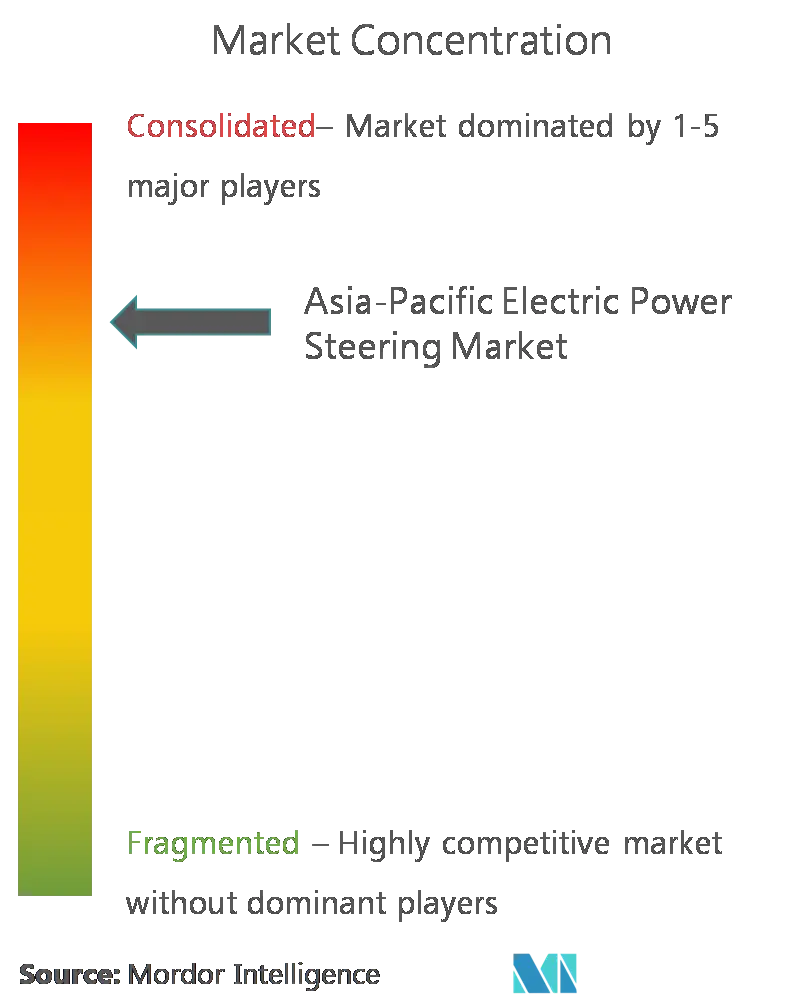
Asia-Pacific Electric Power Steering Market Report Scope
The Asia-Pacific Electric Power Steering market report covers the increasing adoption of EPS systems in India, China, Japan, South Korea, and rest of Asia-Pacific. Also, latest product developments pertaining to the steering system, market shares of different steering systems in both passenger cars and commercial vehicles, and competitive landscape of the players operating in the market. The market is segmented by Type, Component Type, Vehicle Type, and Geography.
The scope of the report includes:
| Column Type |
| Pinion Type |
| Other Types |
| Steering Column |
| Sensors |
| Steering Motors |
| Other Component Types |
| Passenger Cars |
| Commercial Vehicles |
| India |
| China |
| Japan |
| South Korea |
| Rest of Asia-Pacific |
| Type | Column Type |
| Pinion Type | |
| Other Types | |
| Component Type | Steering Column |
| Sensors | |
| Steering Motors | |
| Other Component Types | |
| Vehicle Type | Passenger Cars |
| Commercial Vehicles | |
| Country | India |
| China | |
| Japan | |
| South Korea | |
| Rest of Asia-Pacific |
Key Questions Answered in the Report
What is the current Asia-Pacific Electric Power Steering Market size?
The Asia-Pacific Electric Power Steering Market is projected to register a CAGR of greater than 8% during the forecast period (2025-2030)
Who are the key players in Asia-Pacific Electric Power Steering Market?
Denso Corporation, ZF Friedrichshafen AG, Nexteer Automotive, NSK Ltd. and JTEKT Corporation are the major companies operating in the Asia-Pacific Electric Power Steering Market.
What years does this Asia-Pacific Electric Power Steering Market cover?
The report covers the Asia-Pacific Electric Power Steering Market historical market size for years: 2019, 2020, 2021, 2022, 2023 and 2024. The report also forecasts the Asia-Pacific Electric Power Steering Market size for years: 2025, 2026, 2027, 2028, 2029 and 2030.
Page last updated on:
Asia-Pacific Electric Power Steering Market Report
Statistics for the 2025 Asia-Pacific Electric Power Steering market share, size and revenue growth rate, created by Mordor Intelligence™ Industry Reports. Asia-Pacific Electric Power Steering analysis includes a market forecast outlook for 2025 to 2030 and historical overview. Get a sample of this industry analysis as a free report PDF download.
